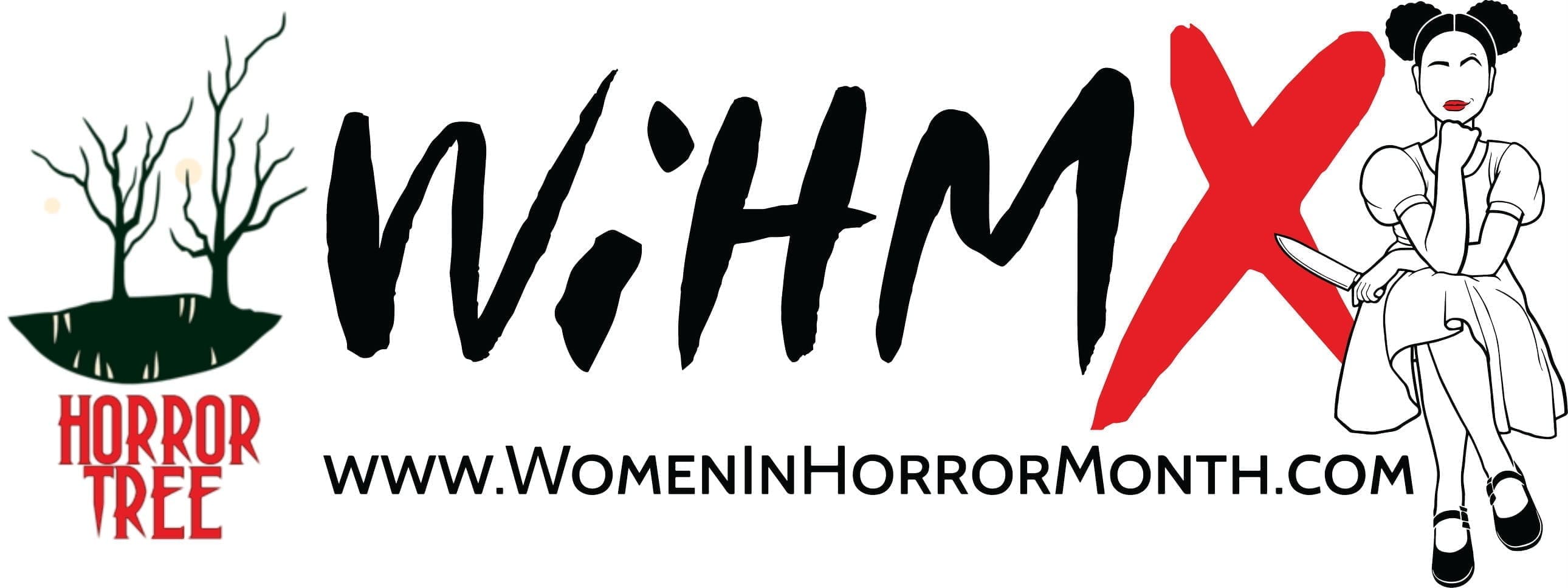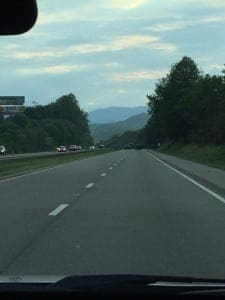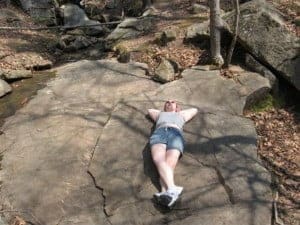WIHM: An Interview With Sonora Taylor

Hi Sonora, and welcome to The Horror Tree! Since this site is a writer’s resource, these questions will be catered toward that area. I’m so happy you’ve joined us! Let’s get started.
Tell us a bit about yourself, your writing life, and what works you have out there or are working on:
Sonora: Thank you! I am a fiction writer living in Arlington, Virginia; just outside of D.C. I’ve been writing off and on my whole life, but got serious about it in 2016. I’ve written two novels: Please Give, a contemporary fiction novel that was loosely inspired by my work in the non-profit sector; and Without Condition, which is out February 12 and follows a serial killer navigating through her first relationship.
I’ve also written several short stories. I have two collections available: The Crow’s Gift and Other Tales, and Wither and Other Stories. My short fiction has also been published by Mercurial Stories, The Sirens Call, and Camden Park Press’s Quoth the Raven.
 Erin: I recently had the pleasure of pre-reading Without Condition, and it was an entertaining ride into revenge in rural North Carolina. 1) Tell readers about the book. 2) What was your inspiration for writing a novel featuring a female serial killer?
Erin: I recently had the pleasure of pre-reading Without Condition, and it was an entertaining ride into revenge in rural North Carolina. 1) Tell readers about the book. 2) What was your inspiration for writing a novel featuring a female serial killer?
Sonora: Without Condition follows Cara Vineyard, a 22-year-old woman who has a deadly side gig. Only her mother knows that she’s a serial killer. Her mother not only knows, but proudly displays souvenirs from her kills on a bulletin board in the house. Things get complicated when Cara meets and falls for a man named Jackson, who doesn’t know her secrets. She knows her mother loves her no matter what, but she isn’t sure Jackson will feel the same – and she doesn’t want to find out.
I was first inspired by an article about the band Ghost. The lead singer, Tobias Forge, used to perform anonymously under various names – Pope Emeritus I-IV, Cardinal Copia, etc. – but he came forward with his identity recently. He said one of the reasons was because his mother was so proud of him that she kept bragging about him to her friends and neighbors in Sweden, and he figured he couldn’t keep it a secret for long.
For those unfamiliar with Ghost, the lead singer frequently performs while dressed as a Satanic priest and in full skull makeup. I found it hilarious imagining this man’s proud mother saying, “That’s my son!” That led to me thinking about what it would be like if the child in question was actually doing bad things and the mother was still proud. I thought of a serial killer, and then to mix things up, I decided to make the killer a woman. The story grew from there, especially once I thought up the woman’s boyfriend.

Taken on a drive down I-40, heading towards Asheville. One of Cara Vineyard’s favorite roads to drive on.
Erin: I believe this is your first horror novel. How did you formulate a plan to write the novel, what was your process, and how did you plot it out to completion?
Sonora: This is my first horror novel, yes. As far back as I can remember writing, my work has always fallen either into contemporary fiction – slice-of-life, etc. – or horror. I actually had some ideas for a second novel that weren’t horror at all. One was a story about a young film studies professor. Another is one I’d still like to write, about two women taking a road trip to different breweries – think The Trip, but with women and beer.
I was trying to write these stories – and getting stuck – while waiting for my editor, Evelyn Duffy, to send back her edits for Please Give. When we met up to discuss Please Give, she told me that, while she enjoyed the book, she thought my talents were more pronounced in my horror. She encouraged me to keep writing horror and to consider a longer horror piece. It was shortly after that when I saw the Ghost article I mentioned before, so I was encouraged to see the idea through to a novel when I realized it was growing beyond my initial, contained idea of a mother who was proud of her murderer daughter.
Because I was editing Please Give, I wrote an outline – only about half of which made the final cut (heh) – and also wrote the first two chapters while I was feeling inspired. I took some time to think about key scenes, write notes, and flesh out some characters (which I’ll talk about further below).
I enjoyed seeing this book grow, especially because it didn’t come to me quite as easily as Please Give. Please Give had plenty of challenges, but sitting down to write and coming up with ideas wasn’t one of them. I think writing a first novel, for all its rewards, also sets you up for quite a challenge with the second book because now you have expectations, both from others and yourself. I’m glad I saw it through, though, because I like seeing how my writing has changed and seeing all the different kinds of stories I can tell.

A truck outside of a popular dairy farm in Orange County, North Carolina. My family and I get ice cream here in the summer.
Erin: Since you live in the Washington D.C. area, and your book was set in North Carolina, did you have to do much research for the descriptive elements of your setting? It certainly felt like the rural south when I read it!
Sonora: I’ve lived in the D.C. area most of my life, almost 21 years as of this interview. However, I also lived in North Carolina for eight years, when my dad was transferred to Durham. We lived in Chapel Hill, I went to high school in Durham, and I went to college at NC State in Raleigh (go Wolfpack). I’ve also spent time in Garner, Clayton, Carrboro, and Asheville for visits; and we regularly drove through Eden and Burlington on our way to visit my relatives in Roanoke, Virginia.
I’ve never lived in a town as small as Leslie (Leslie, Pinesboro, and Egret’s Bay are all fictional N.C. towns, by the way; but every other town mentioned is real). I’ve visited towns that small, though; and the places where I lived were next to towns like Leslie. I based a lot of the look of Leslie on my memories of those places. I also drew on my memories of long drives, hanging out in Raleigh, and spending a lot of time in the woods. My parents and I love hiking. I was a frequent visitor of B Umstead Park in Cary and Eno River Park in Durham. My neighborhood in Chapel Hill was surrounded by woods, and held manmade ponds that my parents, dog, and I liked to walk around, mostly to watch the geese in the winter.

Eno River Trail in Durham, North Carolina. A great place to hike.
Erin: How did you form your characters? Both your protagonist and her supporting cast of characters? Which character was the easier to write? Which was the hardest?
Sonora: I came up with Cara and Delores first, since my initial idea was a proud mother of a daughter that wasn’t doing things worthy of that pride. I knew the story would be from Cara’s point-of-view, but even as I wrote the world around her, I found her to be a tough nut to crack. One challenge I had to overcome was to avoid infusing her with the personality of people I’d written before, especially Beth, the protagonist of Please Give. Early drafts had Cara being more anxious and more sorrowful about what other people thought of her. I knew deep down, though, that a) this wasn’t Cara’s personality, and b) rewriting the same character, but as a serial killer, wouldn’t be interesting for either myself or my readers.
However, to get to that point, I had to write Cara’s story; and as such, I had to write the people around her. Jackson came to me next, and he was probably the easiest character to write. Despite his tendency to get quiet when he’s angry or afraid, he tends to wear his heart on his sleeve, at least when he’s around Cara. He’s not afraid to talk about his life or his fears the way Cara and Delores are. I definitely had to trim down a lot of his dialogue when I was revising – that man can prattle.
I had the opposite problem with Delores. She was the hardest character to write, because – as you’ll see in many of her scenes – getting her to say anything about herself is an almost impossible task. I often grew irritated when writing her scenes with Cara because Delores would either go on offense or refuse to speak. Thus, I was really satisfied with the scenes where she finally did open up (and where I, as the writer, felt it fit her character).
I came up with Cara’s job because of how much the transitory nature of being a delivery girl suited her (and not just for finding victims), and also as a nod to North Carolina’s craft beer scene. I ended up finding a good supporting cast with her coworkers. They went through quite a bit of fluctuation – how many coworkers she had, who they were, etc. I liked that there were people apart from Cara’s mother, boyfriend, and victims that we could see her interact with.
Most of the other characters came through when I finally sat down and wrote her back story, which I’ll talk more about below!

Manmade pond in my old neighborhood in Chapel Hill, North Carolina. I loved growing up near trees and water, even if the bodies of water were small.
Erin: Did you have any breakthroughs while writing your book? How did you work
Erin: Did you have any breakthroughs while writing your book? How did you work though any hiccup areas with your writing?
Sonora: I did! It’s always the best feeling when you get past a hiccup area – it’s like a puzzle that finally has enough pieces assembled that you can just drop in the rest without thinking. Unfortunately, I can’t talk about too many of them in-depth because they are spoilery. But I had two that I’m happy to talk about.
One, as I mentioned above, was coming up with Jackson. When it was just Delores and Cara, I had a good idea for a short story, something that was a darkly funny one-time punch. “Oh, ha ha, a mom displays souvenirs from her kid’s kills like tests and drawings. This could go somewhere.” It ended up going to Cara meeting a man that she gets serious with, but who doesn’t know as much about her as her mother does. From there, I found the theme of unconditional love and what it means to say you love someone no matter what. The rest of the story spun out from there.
The other was settling on Cara’s back story, and one that I was satisfied with. This was a portion I had to force myself to sit down and write in order to be able to finish the book. I’d written several portions of the book before this one, but I was getting stuck. I actually had a few different back stories noted and outlined; but as I wrote the rest of the story, they didn’t feel right. I knew, though, that I needed to establish Cara’s why and how if I was going to ask my readers to follow this person for an entire narrative – and of course, I myself wanted to know.
Rather than continue to write her back story in piecemeal, I forced myself to work from beginning to end, Cara as a child to Cara’s first kill. This helped me meet two characters that were only (or mostly) in her past, yet proved to be pretty important parts of her present. It also gave me a sense of how she was treated by her peers and her teachers, what her life was like in Leslie, and how she interacted with her mother when she was more under her mother’s control.
Writing out her back story helped the rest of the narrative, especially the parts I was stuck on, to fall into place. It wasn’t until I wrote other parts that I could see Cara’s history more clearly. This in turn helped me finish the book and round things out in a satisfying manner.

Another manmade pond in a grove in our neighborhood.
Erin: What challenges do you find in self-publishing your work? I almost forgot that it was honestly. How do you do such a good job of making it look so presentable? Any tips and tricks? Any lessons learned to share with others?
Sonora: The biggest challenge is marketing. You have to Always Be Promoting, and the hardest part about that for me is talking about my own work in ways that sell. I get self-conscious about constantly reminding people that my books are for sale, and get even more self-conscious about what to say that doesn’t sound generic, or like I’m patting myself on the back too much.
I find ways, though; and also push past my own fears and just put it out there. I like to hop onboard hashtags or relevant holidays. I also really appreciate people on social media who ask authors to reply with their books. I need to remember to do that myself. I also try to make sure I’m talking about the book as its author first and foremost – what it was like to write it, sharing my excitement over seeing people buy it and read it, sharing pics of me with my proof copies, etc. Yes, it’s marketing; but I also do it because I genuinely want to talk about those aspects of writing. Those are thus a little easier to do in terms of marketing my work.
My biggest tip is to let people who are professionals at each stage of creating the book – the editing, the cover art, and the formatting – do it for you. If you’re a great graphic designer and/or cover artist as well as a great writer, that’s awesome. I’m neither an artist nor a designer, and I’ve read too many horror stories about what happens when a Word doc gets formatted by Amazon. So, I pay someone else to do it. I frequently work with Doug Puller, who does the formatting for both ebook and paperback, and also draws my covers and the title page illustrations.
Even if you’re a great editor, most will tell you to hire another editor to edit your book. I frequently work with Evelyn Duffy of Open Boat Editing, and she’s great. My work has always improved after she gives it her once-over.
My biggest lesson has been allowing myself time to promote the book ahead of its release. For my first couple books, I put them online very shortly after Doug finished formatting them. This didn’t give me much time to get them out for advance reviews or even to settle down and think of ways to market them. I waited to do that after they were available. They haven’t suffered, but I also wish I’d taken some time to nurture them between being finished on my end and being out in the world – if for nothing else, to help with my own sanity come release day. It’s definitely much more peaceful to not be scrambling to put the finishing touches on everything days before release!

Title page illustration for Without Condition. Art by Doug Puller.
Erin: You also write short horror fiction and had a story in the anthology Quoth the Raven, the anthology in homage to Edgar Allan Poe that just recently made the preliminary ballot for the Bram Stoker Awards. What was the title of your story and what was it about?
Sonora: The title of the story is “Hearts are Just ‘Likes,’” which takes “The Tell-Tale Heart” and moves it to Instagram. It follows an influencer who thrives on being seen online, but must reconcile that with hiding the fact that she’s murdered her boyfriend. I’ve always liked how the horror of “The Tell-Tale Heart” is all in the narrator’s mind, and how his paranoia comes from how he thinks he’s being seen. I think living our lives online, and performing our lives for an audience, creates its own brand of paranoia; one that translates well into such a story.
 Erin: Now that you’ve written several types of work, do you prefer to write short fiction or novels more? Which do you find more of a challenge and why?
Erin: Now that you’ve written several types of work, do you prefer to write short fiction or novels more? Which do you find more of a challenge and why?
Sonora: I don’t have a preference for one or the other. I write more short stories, but that’s kind of a given considering the length. Almost all of my ideas start as short stories, with some growing into novels. After finishing Please Give, I got more ideas that started as novels; but it’s been harder to sit down and follow them through, even when I start to write.
Because of this and other reasons, novels are more of a challenge for me to write. I feel like a lot of my ideas can be wrapped up in 2,000 – 5,000 words. I also find it harder to make sure something is interesting for the length of a novel. Does the premise wear out its welcome after a certain length? How can I increase the stakes? Once I latch onto an idea and how to expand it, writing a novel becomes easier. But more often than not, I find it easier to sit down and write a short story.
In general, I try to just sit down, write, and see how long the story will be. I’m usually steered in the right direction, both by my own writing and by Evelyn’s edits afterward. This is also why I don’t like outlining – it makes me feel pressured to make something longer or shorter than it may end up being.
Photo 8 Caption Umstead-trees: “Trees at B Umstead Park. I spent most of my life near the woods, both in Virginia and in North Carolina.”
Erin: Since this is a special edition interview for Women in Horror Month, talk about some of the female author influences or inspirations in horror you’ve had over the years or women you want to read more of while perfecting your craft? And why.
Sonora: So, I admit that while I enjoy reading horror, my formative horror reading years were bad at including women! I’ve been trying to read more horror and dark fiction by women in my adult years, though; and have also found inspiration from women who may not write traditional horror, but who have a knack for darker prose.
One influence is Flannery O’Connor. I like how she’ll present something horrific as mundane – she allows the horror to speak for itself. I’m also inspired by Gillian Flynn. I like how all of her characters are flawed, and there’s no answer as to who’s right or who’s good – not to mention no easy way out from the horrors her characters encounter.
Two other women I admire weren’t known for horror, but their melancholy prose was an influence on my work as well: Edith Wharton and Anita Shreve. They wrote in cold, heavy ways; but you never felt sad or depressed while reading their work. You saw it as just so – which, depending on the story, could be the scariest part.
Erin: What female writers in horror working today do you admire and why?
Sonora: I’ve been excited by all the recent works by women who write horror and dark fiction. I like Carmen Maria Machado a lot. I’ve also only read one book a piece by Oyinkan Braithwaite and Han Kang (My Sister, the Serial Killer and The Vegetarian, respectively), but I greatly enjoyed both.
I’ve also been thrilled to discover so many great women horror authors online and in the indie author scene. I love the short stories of Sheri White and Christa Carmen, and really enjoy Loren Rhoads’ cemetery travel books.
Erin: What are some of your most favorite short stories or books by women in horror you’ve read?
Sonora: A Good Man is Hard to Find by Flannery O’Connor, Sharp Objects by Gillian Flynn, “Inventories” by Carmen Maria Machado, The Stranger Beside Me by Ann Rule, and “Ashes to Ashes” by Sheri White; to name a few.
Erin: People still tend to cringe or look away when you say you’re a woman who writes horror. Do you find this in your life? If so, what do you tell people? Why do you write horror?
Sonora: I haven’t found this in my life, no; but I’ve definitely witnessed it. One of the things that irritates me is when people go out of their way to say a work of horror written by a woman isn’t horror. You’ll see things like “dark romance” or “haunting tale” and I think, why not call it horror? I’m fine with “dark fiction,” but otherwise, I think you should call it what it is, and make people realize that what they’re reading by a given woman is absolutely horror.
I write horror because I’m drawn to it, and because the story ideas I find interesting enough to follow through on tend to be dark. I like taking innocent things and giving them a sinister twist – sometimes darkly funny, but always dark. That’s what I like to read and watch, so it makes sense that it’d be what I like to write too. I believe in the mantra of writing what you yourself want to read.

Here I am almost twelve years ago, lounging on some rocks at B Umstead Park outside of Cary, North Carolina. I loved hiking there with my friends when I was at NC State.
Erin: What can the genre do to continue to support female writers?
Sonora: While my issues with genre classification happen at the marketing level, horror publishers in particular should take care to ensure they’re not marketing their women writers any differently from the men. Are they playing up things like naughtiness, or how shocking it is that a woman wrote this? If so, stop. Women have been writing horror for years. Focus on their talents as a writer, not the fact that a GIRL is writing about blood and guts.
While this is more of a service for women readers, I’d also like to make a plea to not rely on assault, rape, or sexual trauma to give a woman character her motivation. I’m so tired of reading horror stories or horror comics where a woman is raped, groped, or otherwise sexually traumatized to get her story going; and in ways her male counterparts almost never are. There are plenty of other ways to drive women in fiction to madness.
Erin: What is up next for you in terms of your writing career?
Sonora: I’m finishing up three short stories in progress, which will be included in my next short story collection. I plan to release a longer collection than my last two, one with 17 pieces so far (both flash fiction and longer short stories). Once I finish those, I’m going to see if the ideas I’ve been getting for my third novel will come into fruition on paper.
Erin: Thanks so much for talking with me today on The Horror Tree! We all wish you the best best in your writing career for 2019 and beyond.
Sonora: You’re welcome! Thanks for speaking with me.
 Sonora Taylor, Biography –
Sonora Taylor, Biography –
Sonora Taylor is the author of The Crow’s Gift and Other Tales, Please Give, and Wither and Other Stories. Her short story, “Hearts are Just ‘Likes,’” was published in Camden Park Press’s Quoth the Raven, an anthology of stories and poems that put a contemporary twist on the works of Edgar Allan Poe. Her work has also been published in The Sirens Call, a bi-monthly horror eZine; and Mercurial Stories, a weekly flash fiction literary journal. Her second novel, Without Condition, was released on February 12, 2019. She lives in Arlington, Virginia, with her husband.
Follow Sonora on Facebook | Follow Sonora on Twitter
Follow Sonora on Goodreads | Follow Sonora on Instagram
Read about Without Condition and Add to GoodReads HERE!












Great interview!